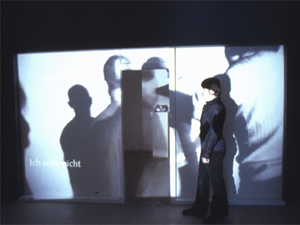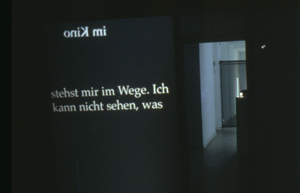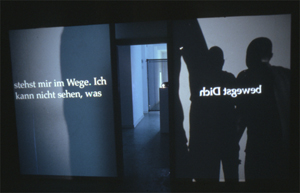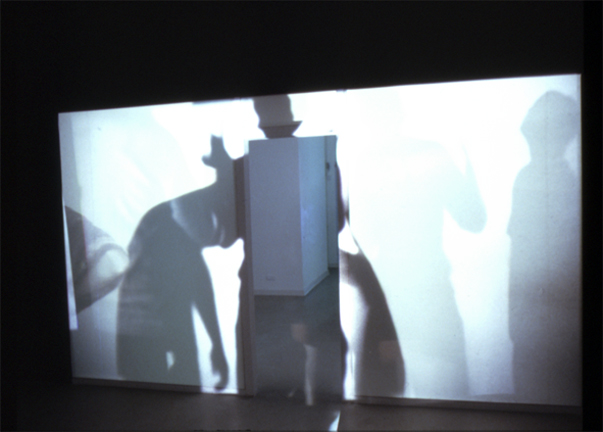| Katya Sander | e@katyasander.net |
| Other Double Binds multiple slide-projections of b/w images & text on semi-transparant wall(s) with door(s). In: Temporary occupations and other double binds (with Alex Villar), Halle für Kunst, Lüneburg, 2001 The Collective Unconscious, Migros Museum, Zürich, 2002 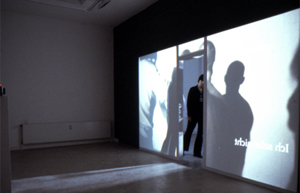 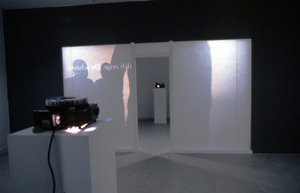
The piece consists of a wall that parts the space in two. The wall mostly consists of a huge window, like the kind of windows in typical suburban one-family middle-class houses, which leads from the living room out to the terrace or garden. Instead of glass in the window-frames, there is an opaque white foil for rear-projection. In the middle of the ‘window area’ there is a door-like opening. In each end of the space stands a slide projector, each covering one side of the ‘window’ area. When entering the space, it is difficult not to be in the way of one of the projectors, casting a shadow in its projection, since it covers almost all of the room. The shadows from the spectators are thus cast onto the ‘windows’ as they move around in the space. The slides that are shown by the slide-projectors are b&w slides of shadows. They are shown randomly and change independent of each other every 3 or 4 seconds.
In-between the shadow-slides, dark slides with white text appear. The texts are obviously fragments of conversations, but impossible to follow and make sense of just like that. One has to read more of them to get an indication of their concerns. The fragments mention a “me” and a “you,” while certain performative instructions are given in parentheses (like directors remarks). The text will of course always be visible on both sides of the foil, but only readable from one side of the ‘window’ and mirrored from the other. Thus, the two slide projectors mix text-fragments that are readable from only one or the other side of the wall. One has to walk back and forth a bit to read the different texts.
At the same time, however, the very bright areas in some slide images will over-shine the dark areas and contrasts from the other side. The images and texts mix, and leave each other enhanced or wiped out, depending on the combination of darkness and light. Thus, it is only possible to read the text on one side, if someone else shadows for the counter-light from the other side and vice-versa. At the same time, since the text always appears in different places and by random, one will also over-shadow the text from the projector on ones own side, when trying to read text from the other side. When standing and reading, people don’t move too much. Some are almost as still as the fixed shadows on the slides. Thus, from the other side, it appears as if some of the shadows move, and some don’t. When moving through the room, from one end through the door to the other, the shadow one casts will shift from very large (when close to the projector), to close to 1:1 (when close to the wall), to larger again (when moving closer to the other projector).
|

